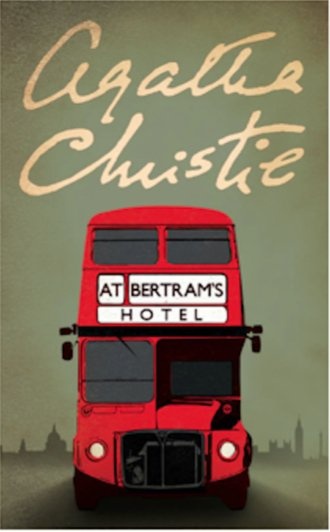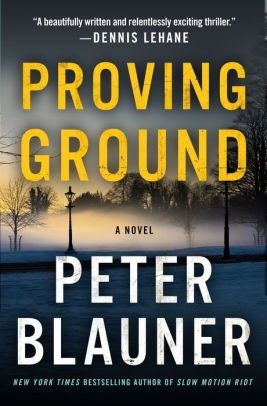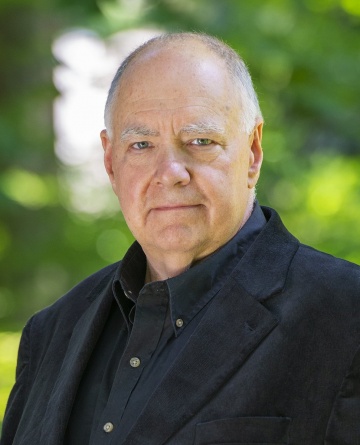Columbia College | Columbia University in the City of New York
“The Satisfying Murder: A Checklist,” by Charles Philipp Martin ’76
My father was an ardent and eclectic reader, a Viennese musician who cherished Goethe, Flaubert and Galsworthy, but who also admired Ian Fleming and wouldn’t pass up a James Michener provided he could lift it. Once, long before I had taken up mystery writing, he read an Agatha Christie, one of the scores of paperbacks that floated around our house like plankton. His comment upon finishing: “All right — you thought someone did it, but it turned out to be someone else. Does it matter?”

To write mysteries is to be comfortable with an inescapable paradox: You must give readers what they expect even as you thwart their expectations. The list of what they expect is short, but inalterable: You must kill someone and you must drop clues as to who did it and possibly how. At the same time you must lead readers to suspect someone else, or perhaps several people, while keeping them off the track of the real killer. Overlook any of these and your book is likely to be flung into the surf or left on the bus, bookmarked at the page of the reader’s betrayal.
For some, these constraints are an artistic deal-breaker. Irish writer Colm Tóibín has no use for mysteries. Isabel Allende claimed she wrote one as a joke. For them, a whodunit is a literary straitjacket.
Others rub their hands, crack their knuckles and seize the mystery form as a challenge. Apart from full-time crime writers, that group includes Umberto Eco and William Faulkner, as well as Joyce Carol Oates, Michael Chabon and Jonathan Lethem. These are my people.

Does it grind my gears that they equate the novel that consumed a year of my life to a literary Ferris wheel? Not particularly. How can they be expected to realize the allure of mysteries if they haven’t read them?
In fact, the constraints of crime fiction have nothing to do with its ability to handle important themes. Power and class were always on Raymond Chandler’s mind. The co-existence of evil and religious obsession makes James Lee Burke’s Dave Robichaux novels too rich for a single reading. Dorothy B. Hughes, an early writer of noir fiction, exposed American society’s misogyny when most men would have needed to look up the word. And through Easy Rawlins, Walter Mosely invited white readers to step through the racial looking glass and see the world as a black man in the oppressive milieu of mid-century Los Angeles.
The best crime novelists drag you by the collar and drop you in their own cities and towns. You feel you’ve grown up in Denise Mina’s Glasgow or Richard Price’s Dempsey, N.J., even though the latter doesn’t even exist. Time barriers vanish, too. Benjamin Black’s Dublin of the 1950s is as real to me as Dickens’s London of the 1850s. Kate Atkinson can portray a young girl lying on the hot grass looking at the summer sky, and 50 summers evaporate: I’m back in that July, gazing at the same clouds.

“... still-life studies in throttled white-man frustration and disappointment: off duty corrections officers with pressure-cooker bodies and iron grips on brown bottles; rain-ruined gnomes in road crew reflector vests gently nursing their beers; strip-mall electronics salesmen in skinny ties seeking solace in cheap watery scotches.”
Most of us have walked into that bar; Blauner makes us see it. Each descriptive sentence carries its own insight.
And that brings us to the other constraints, ones not confined to mysteries. You must write well, engage with the world as it really is, and create convincing and meaningful characters whose lives and concerns transcend the body on the floor.
The clues, the red herrings, the I-was-sure-she-did-it-but-he-fooled-me — those aren’t restrictions to me; they’re bones that can be fleshed out a limitless number of ways. They’re the sonata form that Mozart used again and again, each time making it new. They’re the fruit bowl that Cézanne kept finding different ways to paint, the 2,000th chorus of “Out of Nowhere” that Charlie Parker blew as no one, including him, had done before.
What it boils down to is this: A mystery writer is a classicist. No matter how radical the premise, how modern or postmodern the outlook, or how edgy the characters, the form endures. The writer must always follow the universal principle of keeping the reader one step behind until the last page. Within that form, the world of the novel is yours to create.
Goethe said, “It is when working within limits that mastery reveals itself.” Wish I’d thought of that when my dad trash-talked Agatha Christie.

LINCOLN POTTER

